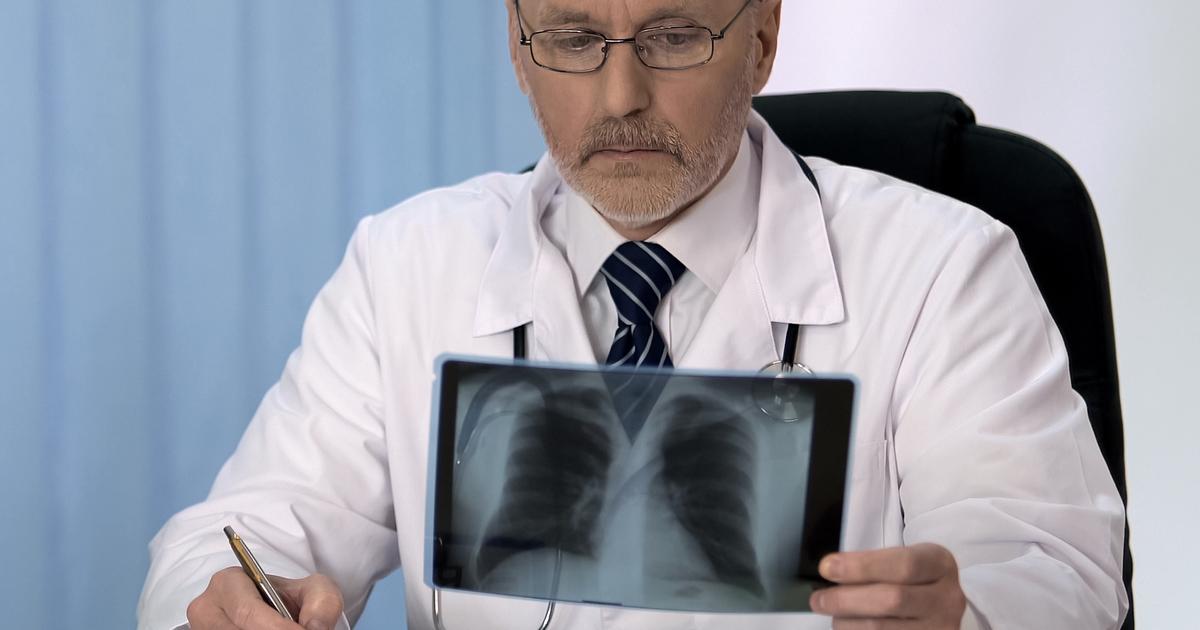10 Unnerving Indications You're Dancing with Emphysema
Imagine an uninvited partner leading a slow, stealthy dance that gradually steals your breath away. This is the unnerving reality of emphysema, a progressive lung condition where the tiny air sacs (alveoli) responsible for your every breath slowly weaken and tragically rupture. Often sparked by long-term exposure to airborne irritants like tobacco smoke, chemical fumes, or pollution, or sometimes by an inherited protein deficiency, its initial steps can be deceptively subtle, easily dismissed as normal aging or minor ailments. But these early whispers are crucial to hear. Recognizing them can make all the difference in managing the condition and preserving your quality of life. Are you catching the subtle, unnerving cues of this dangerous dance? We’re unveiling 10 unnerving indications that it might be time to change partners and consult your doctor immediately.
1. Shortness Of Breath

Emphysema causes the alveoli in the lungs to rupture, which creates a larger space in the tissue that cannot be utilized and less surface area in the lung for the exchange of carbon dioxide and oxygen. As the disease progresses, these spaces in the lungs become larger and larger. The large space causes old oxygen-poor air to become trapped in the lungs, keeping it from expanding and filling with new air that is rich in oxygen. Shortness of breath is a term used to describe when an individual feels an intense chest tightening sensation, has problems breathing, is starved of air, or feels like they are being suffocated. It is also commonly referred to as dyspnea in the medical community. Healthy individuals usually only experience shortness of breath when they are engaging in very strenuous exercise, are morbidly obese, are in extreme temperatures, or are at a higher altitude. Emphysema patients experience shortness of breath because they have less surface area in the lungs to facilitate the transfer of oxygen into their blood.
2. Blue Lips Or Fingernails

Cyanosis is a term used to describe a symptom where the skin of the lips and the skin underneath the fingernails turn blue. Blue lips and fingernails occur when the oxygen content of the blood is too low. The parts of the skin affected by low oxygen concentration have a different color of blood flowing through them than parts of the body with blood with a higher concentration of oxygen. Oxygen-rich blood is bright red and reflects light from under the skin as a pink or flesh color, where oxygen-poor blood is very dark red and reflects light from under the skin as a blue or grey color. The blue discoloration occurs because light reflects from the two colors of blood differently. An individual with emphysema has lungs that do not work as well as they should due to weakened alveoli. Oxygen-poor air fills into spaces where the alveoli have ruptured, not allowing oxygen-rich blood to enter the lung. As a result, the oxygen content of the blood is lower than normal in distant body parts like the fingertips and mucous membranes.
3. Frequent Lung Infections

Lung infections develop when a foreign pathogen enters the lung tissues and is allowed to colonize and thrive in those tissues. The pathogenic invasion of the lung tissues induces a response by the immune system, which produces many of the symptoms associated with lung infections. An emphysema patient has lungs that are already compromised both structurally and functionally. Emphysema causes the lungs to decrease in surface area and develop large openings where old air can become trapped. When a foreign body or pathogen enters an affected individual's lungs, it has a greater chance of causing an infection because it may become trapped as well. Individuals who have emphysema are unable to expel foreign particles and pathogens the same way as a healthy individual because of their lung damage. This mechanism provides the opportunity for lung infections to develop frequently.
4. Chronic Fatigue

Chronic fatigue is characterized by an individual's inability to carry out normal daily activities without feeling overly exhausted and tired. It occurs when there is not enough energy to provide to all of the cells around the body. For the cells in the body to produce usable energy, they require a constant supply of nutrients such as glucose and oxygen. While cells can make energy in the absence of oxygen, this secondary mechanism does not work efficiently and produces potentially toxic byproducts. An individual affected by emphysema does not have as much oxygen in their blood circulation as a healthy individual. This poor oxygen concentration in the blood is because the lungs are too damaged to facilitate an adequate amount of carbon dioxide-oxygen exchange. The poor oxygen concentration of the blood causes an overall shortage of cellular energy in the body. In such conditions, the body allocates energy to vital organs like the lungs and heart. This mechanism takes energy away from the cells of the muscles in the rest of the body, causing fatigue.
5. Wheezing

Wheezing describes when an individual produces an abnormal high-pitched or whistling noise during the process of breathing. This sound is most prevalent when they are exhaling. This abnormal sound is caused by inflammation of an individual's airways, where they become swollen and narrowed. The altered movement of air through narrowed airways is the mechanical mechanism behind the high pitched whistling noise. An emphysema patient may experience wheezing when the air sacs in their lungs become weak and burst open. This tissue damage causes the immune system to respond to the site. The inflammatory process takes place in the lungs, producing swelling, increased blood flow, pain, and discomfort. The swelling and increased blood flow cause the neighboring lung tissues to become compressed, narrowing the individual's airways to the point where breathing causes wheezing.
6. Persistent Cough (Often with Phlegm): The Unshakeable Hack

That nagging cough you’ve dismissed as a "smoker's cough" or a lingering cold could be an unnerving early warning. In emphysema, damaged airways and air sacs struggle to clear mucus and irritants, triggering a chronic cough, often worse in the mornings and sometimes producing phlegm. This isn't just an annoyance; it's your lungs persistently signaling that their delicate tissues are under duress and fighting a losing battle against inflammation and damage. When a cough becomes your constant, unwelcome companion, it’s a clear indication to seek medical advice.
7. Unexplained Weight Loss: The Dwindling Frame

If the numbers on the scale are dropping without any change in your diet or exercise routine, it can be an unnerving sign of advancing emphysema. The sheer effort of breathing with compromised lungs burns a significant amount of calories – work your body performs 24/7. Additionally, fatigue, shortness of breath making eating uncomfortable, or a reduced appetite due to general unwellness can contribute to this unintentional weight loss. It's a serious signal that your body is under immense metabolic strain.
8. Barrel Chest: The Expanding Ribcage

A gradual but noticeable change in chest shape, often developing into a "barrel chest," is a distinct physical indication of progressive emphysema. This occurs as the lungs lose elasticity and air becomes chronically trapped, leading to their overinflation. To accommodate these enlarged lungs, the rib cage slowly expands outwards and upwards, becoming more rounded and barrel-like over time. This structural alteration is an unnerving outward sign of the significant internal lung damage and impaired respiratory mechanics caused by the disease.
9. Swelling in Ankles, Feet, or Legs (Edema): The Distant Distress Signal

While emphysema is a lung disease, its effects can ripple outwards. Persistent swelling in your ankles, feet, or legs can be an unnerving indication, particularly in later stages. As lung function declines, the right side of your heart must work much harder to pump blood through the damaged lungs. This chronic strain can lead to right-sided heart failure, causing fluid to accumulate in the lower extremities. This edema signals significant cardiovascular stress resulting from severe lung impairment.
10. Morning Headaches or Mental Fog: The Oxygen Deficit

Frequently waking with a dull headache, or experiencing unusual difficulty concentrating, memory lapses, or a persistent "mental fog," can be an unnerving sign linked to emphysema. Impaired lung function, especially during sleep when breathing can become shallower, may lead to inadequate oxygen intake and a buildup of carbon dioxide in your blood. This CO2 can dilate blood vessels in the brain, causing headaches, while low oxygen levels directly impair cognitive abilities, signaling your brain isn't getting what it needs.
The Last Step? Taking Action on Emphysema's Signs

The slow, insidious dance with emphysema often begins with subtle whispers – a lingering cough, a little less breath during exertion. But as these 10 unnerving indications highlight, from the tell-tale blue tinge of cyanosis and audible wheezing to systemic effects like unexplained weight loss or morning mental fog, your body sends increasingly urgent signals as lung damage progresses. Ignoring these warnings allows the condition to silently advance, further impairing your precious ability to breathe. Recognizing these indications promptly is your most powerful defense. If any of these resonate with your experience, don’t dismiss them or delay. Partnering with your doctor for an accurate diagnosis and timely intervention is crucial for slowing emphysema's march, managing symptoms effectively, and fighting to preserve your quality of life. Listen closely; your body is asking for help.
